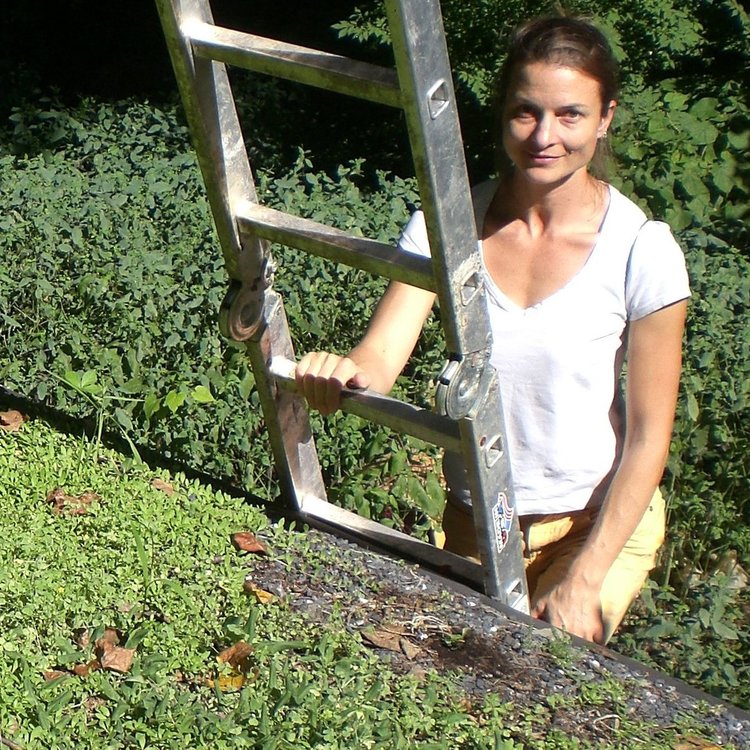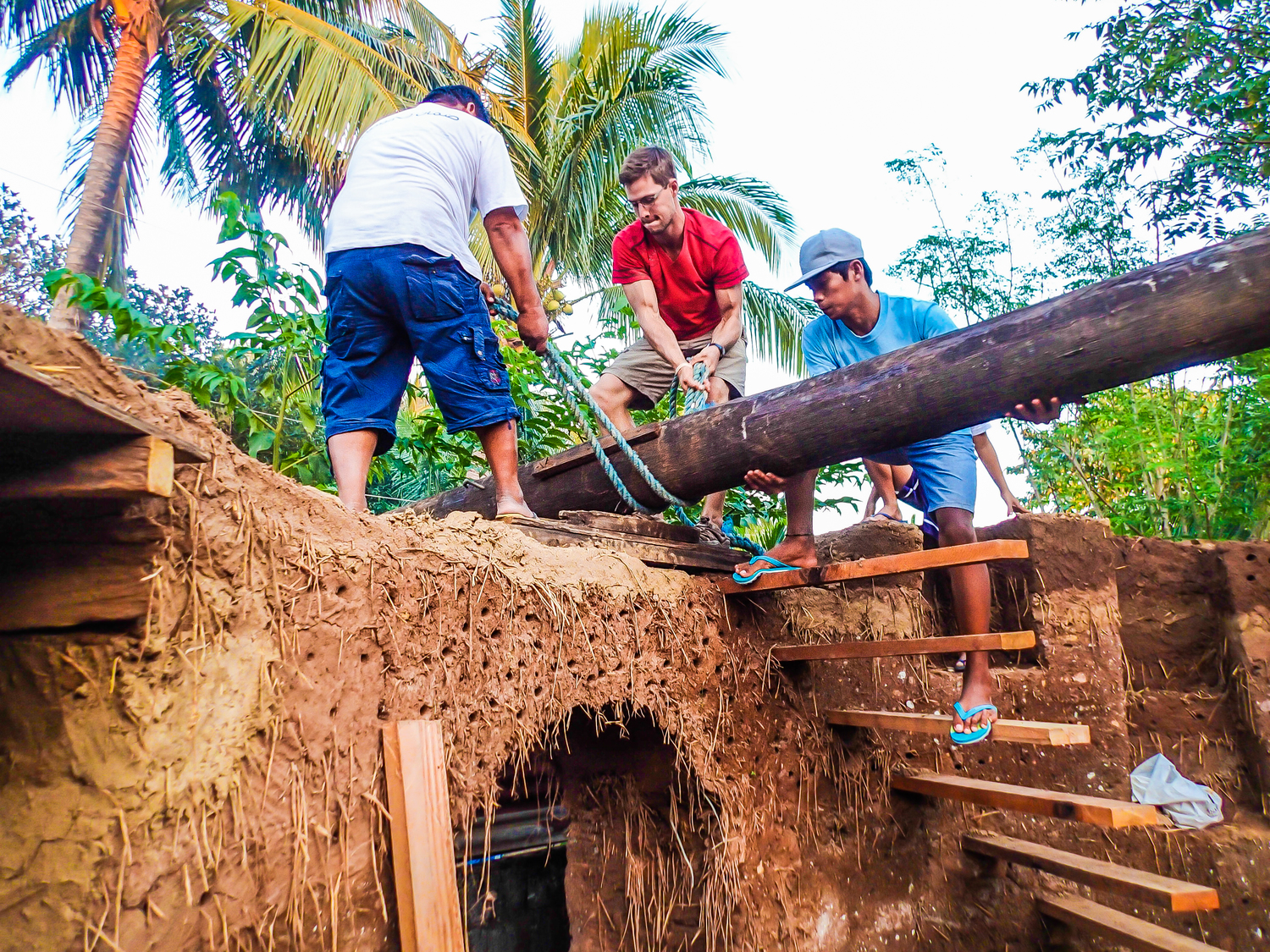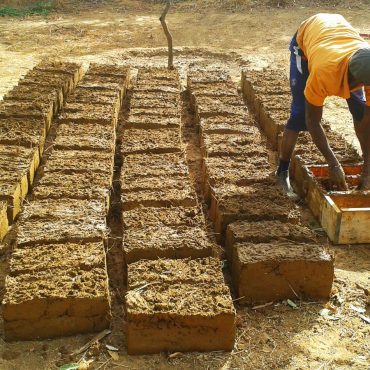
Interview With a Natural Builder: Sigi Koko
Here in the adolescent stages of the natural, building revival there are few architects or builders that have more than a handful of years of experience. Sigi Koko, owner and […]


Shelter is at the core of human development, and our ability to survive. The variety and adaptability of our structures have determined where humans can live, and how we continue to evolve. Despite this deep connection that we have with the buildings we inhabit, construction has become an industry that causes a lot of destruction to our planet, and even to our own health. In order to build more conscientiously, we need to rediscover the methods and materials that have protected us since the beginning. Natural building has been the default system until only a few decades ago (and still is in many parts of the world) when industries began to process massive amounts of materials to homogenize construction and maximize profits. Returning to natural building can help us get back to a healthy way of development that reconnects us with the world around us.
Natural building is a broad term that includes a range of building systems that place emphasis on minimally processed, non toxic, and local materials, as well as those that are recycled and salvaged. The history of most natural building systems is as old as human civilization. All human shelter started with these techniques. For thousands of years construction advanced in different parts of the world based on what was available and what worked. Below is a list of some of the most common natural building materials and methods.
Though mostly based on ancient and traditional techniques, natural building is still relevant in contemporary development for many reasons. For starters, nearly 50% of the world’s population still lives in earthen homes. The quality and strength of many natural building materials rival their industrial counterparts, and are usually much cheaper and more locally available. Modern industrial construction has replaced traditional building systems in many parts of the world, and is one of the most consumptive industries creating tons of pollution every day. In contrast, natural building has a significantly lower impact on the environment, and therefore appeals to anyone who wants to build more conscientiously and to live and work with healthier materials. It offers solutions to people who want to invest in their local community. Furthermore, this alternative offers a way of reclaiming our life support systems, because, after water and food, shelter is one of our species’ three basic needs.
Many of the myriad problems that plague industrial construction are solved or mitigated by natural building. Because it uses a majority of materials that can be either recycled or returned to the earth once their useful life is over, natural construction significantly reduces waste and pollution. For this reason, it tends to build within the capacity of the local environment. Also, when builders extract resources from their own land or local area, they tend to be more careful not to waste or cause any more damage than absolutely necessary.
Rather than being reliant on the homogenized products that the construction industry produces, natural building favors customization. Its methods tend to favor design approaches that prioritize the local ecology. Right angles, flat surfaces that are all one color, constant uniformity, and other industrial constructs don’t exist in the natural world. Instead of trying to manipulate nature’s resources to fit our convenience and aesthetics, Natural Building accommodates this irregularity and uniqueness in it’s structures.
By empowering people to get involved with every step of a build project, natural building helps to remedy the disconnect that many people feel between owners and builders/designers. When working with non toxic materials and with mostly easy to learn skills, everyone can contribute to the projects. Because they involve so many more people, many natural build sites benefit from the extra collective input. This demonstrates how a closer relationship with the materials you use can foster a personal relationship with the whole construction process as well as the finished structure.
As the importance of natural building continues to grow, many pioneers are taking traditional techniques and natural materials to new heights. Far from being an “all or nothing” solution to the problems of industrial building, natural building does not mean we have to discard or ignore the advancements and progress of modern innovation. We do not need to be limited by only the resources found on site. Hybrid structures can take advantage of many different natural materials, and in some cases, even appropriate industrial ones. With this kind of integration, natural building can include all of the comforts and amenities found in modern structures. Modern design techniques can even be used to improve the efficiency and comfort of natural structures and can facilitate the relationship between structure and environment. Appropriate design can expand the creative potential of natural materials.
As more people choose to build with natural materials, knowledge and skills will increase and adapt. Advanced testing and studies continue to teach us about the properties and strength of these ancient materials. When building codes and permitting processes are expanded to include them, the credibility of natural materials will increase. As natural building gains wider adoption and credibility it will drive more innovation in building techniques, broaden applications, and motivate the construction markets to include more natural materials and tools.
Natural building looks to bring humans closer to the environment we live in, not only by using the materials in nature, but by integrating our sheltered living spaces with the local ecology. We at Abundant Edge aspire to work with the natural materials in a given area to produce the best possible structures for our clients using the resources at hand. We customize our designs and building process to prioritize the communities and ecology in which we work. The end result is a structure that fits into its environment like a hand in a glove, and its users and their activities fit inside the building just as comfortably.
Because there are so many uses and opportunities with natural materials, nearly everyone can find an application for them in their building projects. Look to see if what you are trying to build – whether it be a home extension or remodel, a weekend getaway, or even just a storage shed – could be done with natural and local materials. Try to consider how your project could better interact with the site on which it’s placed, and if it might be doing unnecessary harm by being placed there. Together we can build projects that reflect our values and love for the world we live in.
Tagged as: Articles.

Here in the adolescent stages of the natural, building revival there are few architects or builders that have more than a handful of years of experience. Sigi Koko, owner and […]



Copyright Regenerative Skills 2021
Post comments
This post currently has no comments.